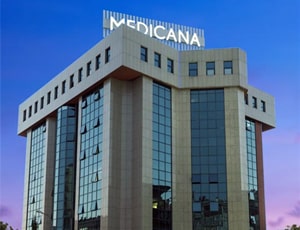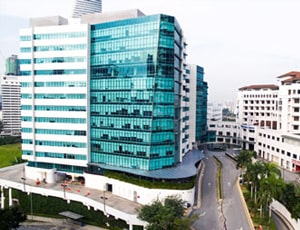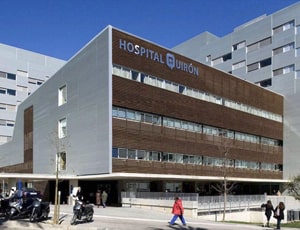ESWL is the abbreviated form of Extracorporeal shock wave lithotripsy. ESWL is one of the most advanced form of treatments used for the treatment of kidney stones. Owing to the ever-increasing cases of kidney stones affecting millions of people all across the world, medical science have shifted from the traditional surgical procedures to modern techniques like ESWL to offer better and progressed forms of treatments to the candidates. The procedure has garnered huge attention from surgeons owing to its success rate. ESWL flaunts a success rate of 95% to 98% in most cases which is why, millions of people resort to it on a global scale.
Extracorporeal shock wave lithotripsy is an advanced method of removing or destroying kidney stones in people, without the traditional surgical procedures. The procedure uses shock waves of high energy to target and hit the kidney stone. The shockwave successfully disintegrates the stone and thereby makes it easier for the disintegrated stones to pass through urine without any surgical procedure. The process is highly beneficial for people who do not want to resort to operations. In this procedure,
ESWL is ideal for small kidney stones. However, the procedure is restricted to some extent and cannot be implemented to everyone. It depends on the body of the individual, and the type and size of the kidney stone, based on which the doctor decides whether to approach with ESWL or resort to different measures as follows:
In case of minor stones, operation might not be required as the kidney stones may pass through the urine on its own. However, one may be prescribed with painkillers in order to help cope with the pain.
Ureteroscopic Stone Removal: The procedure implements the use of ureteroscope which is an extremely thin device inserted into the ureter to disintegrate the kidney stones there and clear them out. For further prevention of blockage, a stent shall be inserted inside the ureter.
Medical Explosive Therapy: For kidney stones measuring <10mm, MET cam be suggested. In this, the candidate is prescribed with medicines which speeds up the flushing out of the kidney stone.
Percutaneous nephrolithotomy: The procedure is performed via a keyhole surgery in which large sized kidney stones are treated. The surgical procedure is highly beneficial in such cases where flushing the stones out is not feasible via other procedures.
ESWL is performed without any anesthesia and the patient is wide awake during the entire procedure. The procedure does not involve own surgery and is thus less painful and easier for most of the candidates. For the procedure, the person has to undergo an ultrasound scanning in order to help the surgeon locate the exact position of the stone. Positioning the target is done accordingly. Positioning is extremely important in case of ESWL, as the procedure uses high energy sound waves that penetrate through the body and disintegrate the stone into smaller fragments. For establishing a connection between the body of the candidate and the machine emitting the high energy shockwave for ESWL, a gel is put on the body.
During the procedure, the candidate may experience slight pain or a stinging sensation. In case of extreme discomfort, the candidate is provided with necessary pain killers to relieve the pain during the procedure.
Recovery period after ESWL treatment depends on the size of the stone, the extent of procedure required, and the health of the candidate as well. In case of the existence of any other diseases that interfere with the procedure, the candidate may need follow-up treatments to avoid any kind of complication. In general, post-ESWL, the candidate may return to daily activities within a few days, but the period may extend to more than a week in extreme cases. Painkillers and antibiotics are usually prescribed to help with the pain and prevent bacterial infection. Besides, the candidate is advised to drink twice the amount of water ingested in regular times.

Istanbul, Turkey
Founded in 1999, Medicana Camlica is a specialty hospital of the Medicana Group which is well known ...more
![]() Private Rooms
Private Rooms
![]() Translator
Translator
![]() Nursery / Nanny Services
Nursery / Nanny Services
![]() Airport Pick up
Airport Pick up

Kuala Lumpur, Malaysia
History Parkway Pantai Hospital in Kuala Lumpur, Malaysia is operating under the Parkway Pantai gro...more
![]() Accommodation
Accommodation
![]() Airport Transfer
Airport Transfer
![]() Choice of Meals
Choice of Meals
![]() Interpreter
Interpreter

Barcelona, Spain
Quironsalud Barcelona Hospital is built at a very convenient location in Barcelona. The hospital is ...more
![]() Accommodation
Accommodation
![]() Airport Transfer
Airport Transfer
![]() Choice of Meals
Choice of Meals
![]() Interpreter
Interpreter

Urologist & Robotic Surgeon
Ghaziabad, India
17 Years of experience
USD 32 for video consultation

Urologist
Akola, India
5 of experience
USD 20 for video consultation

Urologist
Istanbul, Turkey
38 Years of experience
USD 240 for video consultation

Urologist
Faridabad, India
18 of experience
USD 40 for video consultation